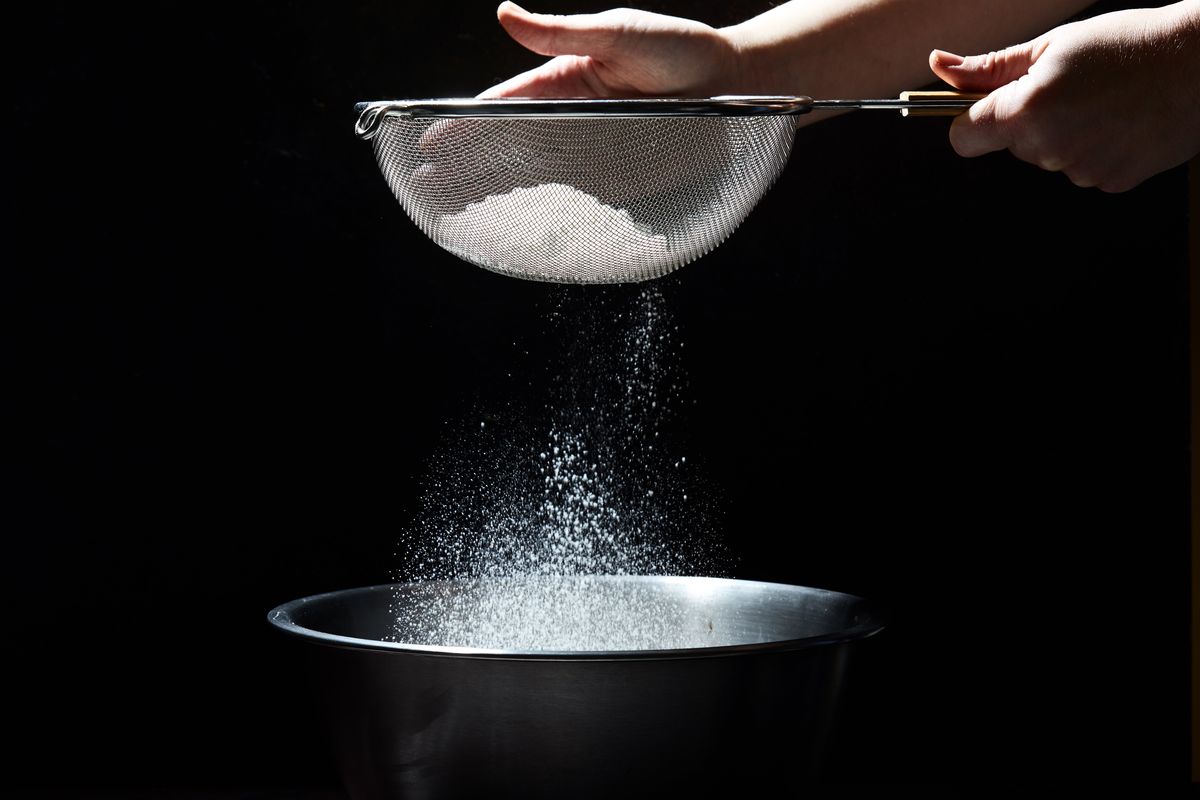Do you need to sift flour for baking? Here’s when it matters.

Old recipes and cookbooks are time capsules – relics that give you insight into a different era. Sometimes it’s just the type of recipe (so much Jell-O!) or the name of a particular ingredient (see my grandparents’ recipes that call for “salad oil”).
Other times, a recipe instruction or step will make you scratch your head and wonder, “Do I really have to do that?”
Primary among them: Sifted flour.
Here’s what you need to know about sifting flour and when it actually matters.
Why do old recipes call for sifted flour?
“Flour as we know it today is much different than flour maybe our grandmothers baked with,” says author Anne Byrn, who has written several cookbooks that delve into vintage recipes. “There were a lot of impurities,” whether sticks, stones “or worse.” Sifting would help ensure that nothing unpleasant ended up in baked goods. “We think of flour coming clean from a sack and that wasn’t always the case,” Byrn says.
Another factor may have been the way the flour was milled, says Jessie Sheehan, a frequent Post contributor and author of “The Vintage Baker.” The flour was likely coarser and clumpier than what we have today, and sifting would have evened and smoothed it out.
When do you need to sift flour?
These days, flour is pre-sifted at the mill, according to “The King Arthur Baking School” book. So most of the time, it’s not necessary.
If you live in a humid climate or see that your flour is looking especially clumpy or compacted, consider sifting, Byrn says. Clumps won’t be sufficiently broken up by whisking, so sifting is best for ensuring you don’t end up with lumps of unincorporated flour.
The type of bake also matters. Cakes with very fine crumbs or that rely on eggs or egg whites for lift, such as sponge or angel food cakes, benefit from sifted flour. You eliminate the risk of clumps and ensure that the flour can be stirred into the batter quicker and easier without knocking all the air out of your beaten eggs.
If you think sifting is a substitute for whisking to thoroughly combine flour, salt, leaveners and spices, think again. “Sifting does not uniformly disperse dry ingredients unless repeated many times,” Rose Levy Beranbaum says in “The Baking Bible.”
Sifting can also be helpful in very wet batters, as “The King Arthur Baking School” explains with regard to its sticky toffee pudding. The more you stir flour with water, the more gluten forms, which can result in a chewier, less tender texture. The lightened, lump-free flour avoids that problem.
If you’re rolling out or kneading dough on a counter, sifting is a nice way to create a thin, light layer of flour that reduces the odds that you add too much flour and end up with tough results, Christine Gallary writes at the Kitchn.
Beyond flour, it’s good to sift ingredients such as confectioners’ sugar and cocoa powder that are almost always clumpy straight out of the package, especially for use in something like a glaze. Byrn says she often finds cake flour has lumps, too.
Is there really a difference between sifted and unsifted flour?
Yes. If you sift flour, it becomes aerated and less dense. “A cup of flour sifted before measuring will weigh 20 to 30 percent less than a cup of flour sifted after measuring – a difference that can make a huge impact on the texture of finished baked goods,” Cook’s Illustrated says.
If you’re looking at a modern recipe that calls for sifted flour, you must pay careful attention to where the word “sifted” is, Sheehan says. If it says “sifted flour,” you sift and then measure. If it calls for “flour, sifted,” you measure and then sift. This is an especially important detail if there are no weights included or you aren’t measuring by the weight called for in a recipe. If there are weights and you’re using a scale, sift whenever you prefer as long as you get the right number of grams (or ounces).
How do you sift flour?
You may be familiar with hand-cranked sifters. If you have one, great. Otherwise, “you don’t have to buy anything special,” Sheehan says. A fine-mesh sieve works well. Just scoop the flour into the sieve and gently tap to work it through. You may need to lightly press down on any clumps to break them up and get them through the mesh.
As I’ve learned from experience, be sure to work over a wide enough bowl (maybe with a dish towel underneath?) because it’s very easy to make a mess if you’re a little too enthusiastic or move even a fraction of an inch off course.